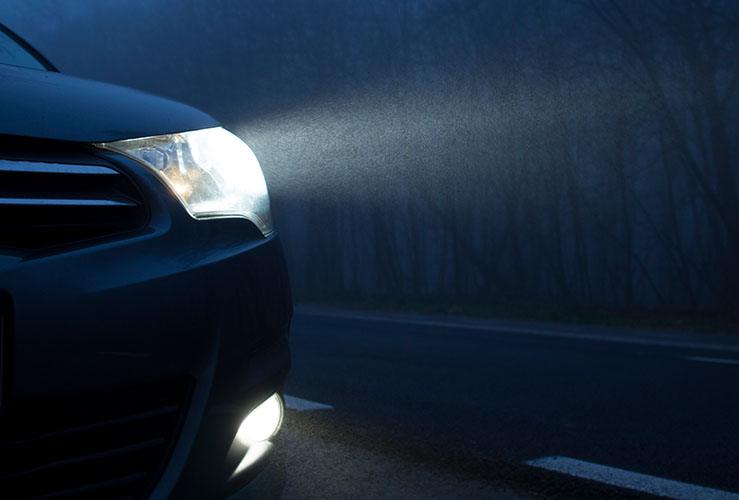All cars must be fitted with fog lights in order to be road-legal. Using them in an appropriate way will help keep you, your passengers and other road users safe. Conversely, using them incorrectly could endanger those in your vehicle and other road users.
We've created this guide to remind drivers how to use fog lights properly.

- If you see oncoming fog, check your mirrors for vehicles behind you, then reduce your speed.
- If visibility is poor, it's a good idea to increase the distance between you and the vehicle in front.
- Maximise visibility by keeping your windscreen clean.
- Use your wipers.
- Sometimes a 'fog' warning will appear on the motorway. Even if it is not foggy at that precise moment, it's important to be ready for the sudden appearance of fog.
- Make sure you know where your fog light switch is.
- If your visibility is reduced to around 100m, consider switching on your fog lights.
- Avoid using your full beam, since the fog will reflect the light and make it even harder to see.
- In extreme fog, wind down the windows at junctions so you can listen for traffic.
- If visibility is so bad and you feel it is dangerous to continue, park your vehicle somewhere safe and wait until the fog clears.
Fog lights are only for use in fog, as stated in the Highway Code (rule 226).
If you have an accident in fog and weren't using your fog lights, your insurer may refuse to pay out.
It is against the law to use either front or rear fog lights when visibility is above 100m (328ft). This is because it dazzles other road users, making it harder for them to see. This piece of legislation is found in the Road Vehicles Lighting Regulations 1989.
If the police catch you using fog lights in normal visibility they could fine you.
When the weather is foggy, it's important to check your fog lights are working before you set off. Fog is most prevalent in the autumn and winter, so it's a good idea to ensure your fog lights are working towards the end of the summer.
Your car may be fitted with sensors that activate your lights in low-light conditions. However, it's important to double check they are working when driving in fog, as such conditions can confuse some sensors.
If you have a car with daytime running lights, be sure the rear lights are on, since most DRL systems only activate front beams.




